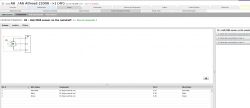No i'm not wrong It's as I wrote. Most of the inductive sensors I encounter in my work can generate an alternating current of about +/- 1 Volt (signal amplitude ~ 2V). These 5 Volts with a current of several dozen miles Amperes (usually 20-40) I am writing about provide a constant component for digital logic circuits. This component after connecting the sensor, which is also a resistor and load for this connection, oscillates around 2.7 Volts, and thus we get signal amplitude at the level of 0.7 Volts to 3.7 Volts. Digital logic circuits from the CMOS group can interpret such signals and any voltage above 3.4 Volts will be considered high (logic 1) while any voltage below 1 Volt will be considered low (logical 0). Thanks to this operation the driver knows what to do the sensor tells him what he saw and what he counted.
PS When I started this thread, I did not have such knowledge, so I decided to learn and improve. What I learned many years ago, unfortunately, did not cope with current systems and realities today.




